From rebirth to the fight with Genoa
Preamble
As mentioned in the previous part, the old inhabitants of the coast and among them the Matuziani, after the threat of Saracen raids, left their mountain refuges to return to the coast. 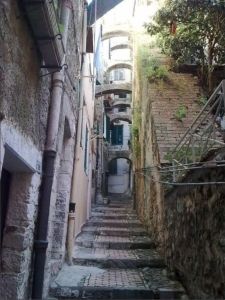
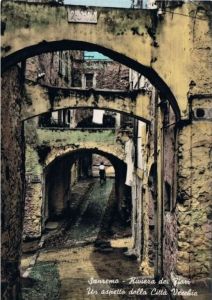 Their old villages were almost completely destroyed so they had to rebuild everything, but using safer defensive criteria. There were no more organised raids like the
Their old villages were almost completely destroyed so they had to rebuild everything, but using safer defensive criteria. There were no more organised raids like the 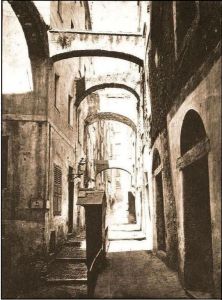 previous ones, but there was always the danger of individual pirate groups that could offend the inhabitants.
previous ones, but there was always the danger of individual pirate groups that could offend the inhabitants.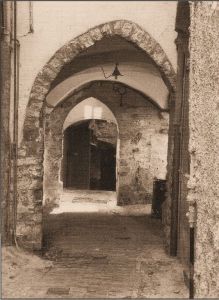 A practical example is the one that arose on the hill of the Coast, the Pigna. Created in the shape of a pinecone, the houses were all close to each other, sometimes supported by archivolts, very high like towers. The entrances were high with respect to the street level and could be reached by stairs that could be easily removed in case of danger.
A practical example is the one that arose on the hill of the Coast, the Pigna. Created in the shape of a pinecone, the houses were all close to each other, sometimes supported by archivolts, very high like towers. The entrances were high with respect to the street level and could be reached by stairs that could be easily removed in case of danger.
The entrance to the village was controlled by several doors, there were 15 at the beginning, guarded and put in conditions to be defended more easily. Practically a sort of fortress enclosed on itself, moreover defended by a strong place about where are now the Regina Elena Gardens, owned by the Counts of Ventimiglia. The same defence model was also implemented in the xona del Piano, around the parish church and the Church of San Siro.
This type of fortification, perhaps designed for occasional incursions, was soon put to the test by the events that were about to unfold.
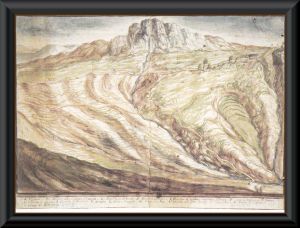 In the meantime, families returned to populate the countryside. Three documents from the years 979-980 accurately describe the procedures followed and also constitute a precious toponymy source, determining the boundaries of the territory between the Black and Green chiefs and, along their respective ridges, up to the summit of Mount Bignone. The first document of 979 is a petition of twenty-eight families, who ask (and obtain) in emphyteusis twenty-eight portions of hilly and mountainous land located on the ridge that goes down from Monte Bignone to Capo Pino, as well as land in the Paragallo region (today's Baragallo), in the valley of the San Francesco stream and near the castrum. With the second document of 979, Bishop Teodolfo assigns half of the land owned to these families and requires them to pay him, for the first year, the ninth part of the wheat, the eighth for the second and the seventh for the third and following years; he exempts them for a decade from paying parts of the production of olives, grapes and figs, but for each male component over ten years of age was due annually to the bishop "a good chicken".
In the meantime, families returned to populate the countryside. Three documents from the years 979-980 accurately describe the procedures followed and also constitute a precious toponymy source, determining the boundaries of the territory between the Black and Green chiefs and, along their respective ridges, up to the summit of Mount Bignone. The first document of 979 is a petition of twenty-eight families, who ask (and obtain) in emphyteusis twenty-eight portions of hilly and mountainous land located on the ridge that goes down from Monte Bignone to Capo Pino, as well as land in the Paragallo region (today's Baragallo), in the valley of the San Francesco stream and near the castrum. With the second document of 979, Bishop Teodolfo assigns half of the land owned to these families and requires them to pay him, for the first year, the ninth part of the wheat, the eighth for the second and the seventh for the third and following years; he exempts them for a decade from paying parts of the production of olives, grapes and figs, but for each male component over ten years of age was due annually to the bishop "a good chicken".
After ten years half of the wine, figs and oil had to be delivered to the bishop.
In the document of 980, taking into account that the possessions in the Matuzian and Tabiese territory, including the churches already built, were largely destroyed and uninhabited, therefore without being able to profit from them, they were donated for three quarters, including annuities, to the monastic and clerical orders present.
A part of other ecclesiastical properties were granted as feudal property to some important people and their descendants, exempting them from the payment of tithes, duties and rights. In return they had to swear allegiance to the Bishop and guarantee safety for him and the curia in his retinue and, on the occasion of his visits to San Romolo, they had to pay him solemn homage and hospitality and horses.
Disputes between the Bishops and Genoa
In order to secure the dominion of the lands of San Romolo, the Bishop of Genoa Corrado obtained from the Count of Ventimiglia the renunciation of some of his most important rights, both political and financial, which he enjoyed over the territory of San Romolo and the nearby village of Ceriana. In the document of 1038, the "... loci Sancti Romuli dicitur" was mentioned (the first mention of the new name of the town was in the document of 979), a sign that the new onomastics had entered into current use.
With this operation Bishop Corrado probably intended to transform his land, located in the Sanremo area, from personal property into a real bishop's domain, over which he could exercise full and undisputed feudal sovereignty.
It is evident how factors, such as the increase in agricultural activities, pastoralism, the population itself and a general improvement in living conditions, have influenced his decision to increase his authority over the whole territory. bishopric. Moreover, in 1095, therefore a few decades after the first agreement, another Count of Ventimiglia, Corrado III, confirmed the renunciation of his comitual rights on the Sanremo territory in favour of the Bishop of Genoa. In any case, at the beginning of the 12th century, despite these considerable concessions, the area of Sanremo was still formally part of the Ventimiglia committee, when some new facts occurred in the political and economic conditions of the agricultural and rural intemelia and Sanremo society.
While the Bishop of Genoa was acquiring more and more authority over the territory of San Romolo, also thanks to favourable sentiments in his favour towards the new landowners who were reluctant to pay the tithes, Genoa was doing the same, which, besides increasing its influence on the West, saw in San Romolo the ideal point for its fight against its rival Ventimiglia.
In fact, in 1130 the Genoese occupied San Romolo militarily and built a tower there, forcing both the Sanromolesi and the inhabitants of Baiardo, together with the Count of Ventimiglia, to swear loyalty to Genoa. Since it was difficult for the Intemeli, despite the treaties, to lower their heads, to break down their resistance the Genoese acted on a personal level by capturing the Count's sons and freeing them only in case of complete submission and the definitive renunciation of their rights over San Romolo. 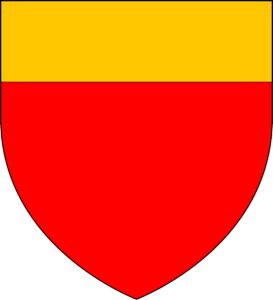 It was now open war between Genoa and Ventimiglia, but between 1140 and 1262, the date of the final treaty of Aix, which marked the political and economic end of the county of Ventimiglia, Genoa had many difficulties, given the heroic resistance of the Ventimigliesi. In this war, almost all the coastal towns, including San Romolo, sided for Genoa, which in the meantime had been able to enter into agreements and alliances with them.
It was now open war between Genoa and Ventimiglia, but between 1140 and 1262, the date of the final treaty of Aix, which marked the political and economic end of the county of Ventimiglia, Genoa had many difficulties, given the heroic resistance of the Ventimigliesi. In this war, almost all the coastal towns, including San Romolo, sided for Genoa, which in the meantime had been able to enter into agreements and alliances with them.
On the side of the Bishops, Siro III, who became Archbishop in 1133, worried by the expansion of Genoa, which had become powerful after his participation in the First Crusade, tried to regain his supremacy, assuming in 1143 the title of Dominus et Comes, i.e. the holder of spiritual and temporal power, and reaffirmed the right to appoint viscounts, gastalds and consuls in his territories and to administer justice with his own unquestionable sentences. This claim against San Romolo was even more marked, since the opposition to the payment of tithes continued; and although the archbishop managed to win several cases, and officially became the tutor et defensor of the city, the practical results remained poor. The ecclesiastical authority was re-established at least formally for some time, also because Genoa was then too busy in the war against Ventimiglia.
In the 12th century, San Romolo, taking advantage of the economic growth, had become a prosperous city for its times and for this reason it fed the appetites of both the Bishops, but above all that of Genoa. The city, however, as always throughout the centuries, fought against anyone who attacked its autonomy and interests. There were new models of both administrative and political organisations.
The newborn corporations and the Genoese Compagna, a sort of economic association first of all, but then turned into politics, were the ones that influenced the emancipation of the City. The Compagna, born in Genoa, had a well-defined structure, made up of members (comrades) from 17 to 70 years old, who formed the parliament led by the Consuls (already mentioned in a document of 1110), who, for the five years of their mandate, administered justice and commanded the army in case of war. The supreme magistrate was the abbot of the people, while the city was represented by the podestà.
In 1143 the Political Companion of St. Romulus was constituted and made obligatory for all the men of the territory, appointed by the archbishop.  At the end of that century the parliament gathered, heard by the sound of the bell of `cintraco', in the church of Santo Stefano, while the consuls, appointed by the archbishop, administered justice in the special room of the 'Capitolo', located in the homonymous via della Pigna.
At the end of that century the parliament gathered, heard by the sound of the bell of `cintraco', in the church of Santo Stefano, while the consuls, appointed by the archbishop, administered justice in the special room of the 'Capitolo', located in the homonymous via della Pigna.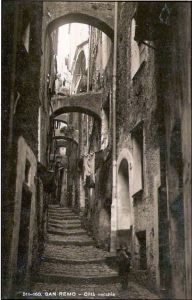 On 16 October 1199 an agreement was signed between San Romolo and Genoa, as did almost all the municipalities of the western part of the country, which sanctioned, in return for not appointing Genoa as mistress and therefore an apparent autonomy, a series of duties, such as supplying men and ships in case of conflicts, especially with Ventimglia, limits to free navigation by setting a limit beyond Sardinia and Barcelona, except after having passed through Genoa, to make contributions to the above, to obey its prohibitions, not to make other agreements, and finally to swear allegiance to the Companion, an oath renewed every five years. Genoa's plan was clear, i.e. aimed against Ventimiglia's will to continue its effective autonomy from Genoa. The convention was certainly not in the expectations of the Sanromolesi, but Genoa was too powerful and therefore the lesser evil was chosen.
On 16 October 1199 an agreement was signed between San Romolo and Genoa, as did almost all the municipalities of the western part of the country, which sanctioned, in return for not appointing Genoa as mistress and therefore an apparent autonomy, a series of duties, such as supplying men and ships in case of conflicts, especially with Ventimglia, limits to free navigation by setting a limit beyond Sardinia and Barcelona, except after having passed through Genoa, to make contributions to the above, to obey its prohibitions, not to make other agreements, and finally to swear allegiance to the Companion, an oath renewed every five years. Genoa's plan was clear, i.e. aimed against Ventimiglia's will to continue its effective autonomy from Genoa. The convention was certainly not in the expectations of the Sanromolesi, but Genoa was too powerful and therefore the lesser evil was chosen.
The dualism of power between the Genoese and the Episcopal powers brought to light in 1216 the conflict between the two powers with a direct clash between the two factions pro-Archbishop and pro-Genoa, characterised by mutual revenge and murder.
Archbishop Ottone succeeded in re-establishing authority, obtaining recognition of his rights. So much so that in 1221, given the permanence of the Genoese troops for the war against Ventimiglia, there were riots in the territory of San Romolo with consequences of retaliation from the Genoese side, the protection of the Archbishop was invoked, who willingly went to San Romolo, welcomed as a liberator. Genoa, however, was no less and seized all the ecclesiastical rents and a heavy fine from its inhabitants. In turn, the Archbishop declared a general ban on the city of Genoa.
In his own small way, this brought out the conflict typical of the Middle Ages, i.e. between Guelphs (partisans of the pope) and Ghibellines (in favour of the emperor), so much so that the power conflict between the Episcopal Curia and Genoa, skilfully exploited by St. Romulus, now favouring each other, and looking after their own interests, aroused the interest of the Pope and the Emperor. In 1223 the rebels of St. Romulus were banned by the Empire, so that two years later, once the rebellion had subsided, it was considered more convenient to accept the prerogatives of Archbishop Ottone. The importance of the Document of 6 May 1225 was due to the fact that the Consuls swore to faithfully observe the chapters of the city of San Romolo, a sign that the Statutes were already in force, but subject to the interpretation of the Archbishop.
From 1230 to the end of the century, the Genoese Church managed to maintain the government of the City and keep the fervour of the population at bay (in 1251 the Archbishop appointed Lanfranco Usodimare as podestà, charging him with administering justice and collecting fines), but the discontent towards the payment of taxes and the recognition of the archbishop's rights never ceased completely.
In 1292 the Dominican Jacopo da Varagine, a famous preacher and author of historical and religious works, took up the chair of the Genoese archbishopric. Having examined the ambiguous situation of St. Romulus and the chaos that reigned even among his vassals, who came, in 1294, to auction off the Curia's collections, as a wise and rational man as he was, he asked Pope Boniface VIII for permission to sell land and rights over St. Romulus and Ceriana.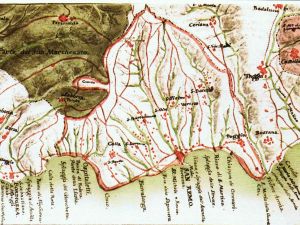 The bishops of Noli and Alenga examined the matter and found that the distance from Genoa was such as to prevent a direct and marked control over what was happening there that, since the benefits due to the sale were greater than the status quo, on 8 January 1297 Jacopo Da Varagine sold the castrums of San Romolo and Ceriana to Oberto Doria and Giorgio De Mari, for the sum of 13,000 Genoese lire.
The bishops of Noli and Alenga examined the matter and found that the distance from Genoa was such as to prevent a direct and marked control over what was happening there that, since the benefits due to the sale were greater than the status quo, on 8 January 1297 Jacopo Da Varagine sold the castrums of San Romolo and Ceriana to Oberto Doria and Giorgio De Mari, for the sum of 13,000 Genoese lire. The territory sold to the Genoese lords Doria and De Mari extended from the Madonna della Ruota, between Bordighera and Ospedaletti, to the course of the Armea torrent; the town had grown and boasted valuable buildings, including the collegiate church of San Siro, built in Romanesque-Gothic style following the example of Albenga cathedral, and the grand archbishop's palace, built in 1259 and enlarged in 1282, as well as the castle. The population lived on agriculture, fishing and maritime traffic.
The territory sold to the Genoese lords Doria and De Mari extended from the Madonna della Ruota, between Bordighera and Ospedaletti, to the course of the Armea torrent; the town had grown and boasted valuable buildings, including the collegiate church of San Siro, built in Romanesque-Gothic style following the example of Albenga cathedral, and the grand archbishop's palace, built in 1259 and enlarged in 1282, as well as the castle. The population lived on agriculture, fishing and maritime traffic.
The new masters came from illustrious families. Oberto Doria, lord of Loano and count of Dolceacqua and Val Nervia, was the admiral who defeated the Pisans in the naval battle of Meloria. Little is known about Giorgio De Mari; his family participated in the ferocious disputes that bloodied the cities between the hamlets of the Guelphs and the Ghibellines, but in fact for the defence of their personal interests, headed respectively by the Grimaldi, Fieschi and Vento (for the Guelphs) and by the Doria and Spinola (for the Ghibellines).
The new Masters and the passage to Genoa
On 2 February 1297, the new owners took possession of the property and immediately established the obligations of the population, first of all their loyalty to them and their courts and guaranteeing hospitality for at least three days a year, half of all proceeds from convictions, confiscations and sea rights. It was up to them to appoint Consuls, Vicars, Podestas and Notaries, to intervene in the most important appointments. They even modified the Statutes as they did immediately, in 1298 and later in 1303.
When they died, conflicts and rivalry broke out between the heirs, but the division of property had already been made in 1308 when, in one of the many clashes, the men of San Romoli, led by Andriolo Doria of Dpceacua, defeated the Guelphs of Francesco Grimaldi, killing him together with two hundred of his men near Ventimiglia and therefore in favour of the Ghibellines. 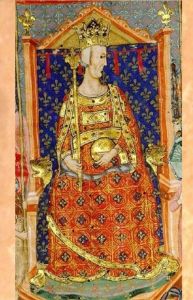 In 1318 King Robert of Anjou, of Guelph tendencies, who became Governor of Genoa, after having defeated Matteo Visconti in Genoa, intervened by besieging and defeating Ventimiglia and Dolceacqua. Shortly afterwards, the Ghibellines took over Ventimiglia again and so King Robert intervened again. Taking advantage, on 20th
In 1318 King Robert of Anjou, of Guelph tendencies, who became Governor of Genoa, after having defeated Matteo Visconti in Genoa, intervened by besieging and defeating Ventimiglia and Dolceacqua. Shortly afterwards, the Ghibellines took over Ventimiglia again and so King Robert intervened again. Taking advantage, on 20th 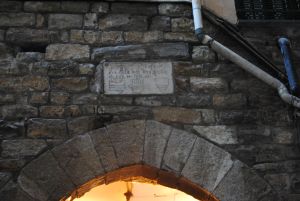 October 1319, of the absence of Accellino Doria, Lord of San Romolo, who had gone to help his cousin in Dolceacqua, the Guelphs of San Romolo made a bargain with the King's representative, the syncalco Giovanni Mansella, who was welcomed by 31 Councillors in the Chapter Hall. He undertook on behalf of the King that in exchange for their loyalty, the men of San Romolo would keep their rights, they would no longer have any new rights and the possibility to maintain and modify their Statutes. Moreover, for their defence, a force of infantrymen and knights would be maintained in the city, at royal expense.
October 1319, of the absence of Accellino Doria, Lord of San Romolo, who had gone to help his cousin in Dolceacqua, the Guelphs of San Romolo made a bargain with the King's representative, the syncalco Giovanni Mansella, who was welcomed by 31 Councillors in the Chapter Hall. He undertook on behalf of the King that in exchange for their loyalty, the men of San Romolo would keep their rights, they would no longer have any new rights and the possibility to maintain and modify their Statutes. Moreover, for their defence, a force of infantrymen and knights would be maintained in the city, at royal expense.
The city was reinforced, enlarging the first part of the walls, which included the lower part of the present day streets Romolo Moreno and Rivolte  San Sebastiano, a rampart was dug around the new walls (the Vallai) and in 1321 the gate of Santo Stefano was built. A plaque above the archivolt of the gate, in addition to the Angevin symbols, also shows the date of the event.
San Sebastiano, a rampart was dug around the new walls (the Vallai) and in 1321 the gate of Santo Stefano was built. A plaque above the archivolt of the gate, in addition to the Angevin symbols, also shows the date of the event.
After another intense period of struggles, the city was again conquered by the Doria family in 1331 and with a hypothetical peace in 1331 the Castrum became their property again.
But all this period of struggles and wars also within the Doria family, exhausted and suffocated by debts and unable to guarantee their descendants a secure future, they decided to sell their rights. They were not very well-liked by the local population and between 1350 and '60 they capitalised most of their shares at 23,500 Genoese lire, leaving the rest to individual negotiations.
In this period the Sanromolesi knew how to write one of the most beautiful and significant pages of their history. Always eager to obtain the greatest possible independence, to protect the hard-won freedoms, they decided to pay the sums requested by the Doria themselves. At first the heads of the family gathered all the money available, then, seeing that 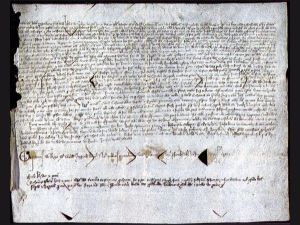 they could not reach the sum agreed with Genoa, corresponding to half of the entire value, the women stripped themselves of all their jewellery, clothes and furniture, allowing their generous sacrifice to meet the commitment. The other half was paid by Genoa, and the men of San Romolo undertook to pay 150 Genoese lire each year as interest.
they could not reach the sum agreed with Genoa, corresponding to half of the entire value, the women stripped themselves of all their jewellery, clothes and furniture, allowing their generous sacrifice to meet the commitment. The other half was paid by Genoa, and the men of San Romolo undertook to pay 150 Genoese lire each year as interest.
At this point, the two parties drew up their sums. Genoa was satisfied because St. Romulus entered into its orbit of influence, and for St. Romulus, the satisfaction was even greater because with the sacrifice of all it had been possible to redeem at least in part a semblance of freedom.
The date of 15th March 1361, when the convention in pomp and circumstance was stipulated in the Cathedral of San Lorenzo in Genoa, sanctioned the new relations between the two cities and was celebrated as a feast as early as that month with the name of "Feast of Chains", an event that reached its climax when real chains, the symbol of feudal enslavement ended forever, were dragged through the streets between two wings of applauding crowds. This feast will be repeated every year, uninterruptedly, until 1824.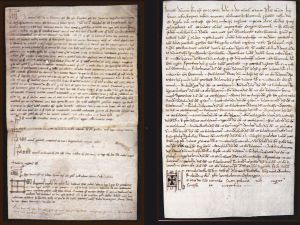 In this arbitration sentence, the obligation of the two parties was established. San Romolo's obligations, which had already been established once, remained the same, i.e. Genoa's appointment of podestà, officers of the administration of justice and civil power, notaries and scribes, but the Municipality was responsible for them; San Romolo had to participate with soldiers and proportionate means in the wars in which Genoa was involved and had to use land and sea and contribute to maritime armament; the Municipality could not order collections or impose new customs. On the other hand, in the application of the law, the Statutes of San Romolo were valid; the gabelle, the bandits and the prairies belonged to the Municipality, as well as the products of the banners and condemnations; the men of San Romolo would have enjoyed the same privileges as the citizens of Genoa. The taxes on the Municipality's property would be fixed by mutual agreement between the two parties.
In this arbitration sentence, the obligation of the two parties was established. San Romolo's obligations, which had already been established once, remained the same, i.e. Genoa's appointment of podestà, officers of the administration of justice and civil power, notaries and scribes, but the Municipality was responsible for them; San Romolo had to participate with soldiers and proportionate means in the wars in which Genoa was involved and had to use land and sea and contribute to maritime armament; the Municipality could not order collections or impose new customs. On the other hand, in the application of the law, the Statutes of San Romolo were valid; the gabelle, the bandits and the prairies belonged to the Municipality, as well as the products of the banners and condemnations; the men of San Romolo would have enjoyed the same privileges as the citizens of Genoa. The taxes on the Municipality's property would be fixed by mutual agreement between the two parties.
But as expected, Genoa soon, given its heavy commitments, amended the Convention to its own advantage. Thus, in 1385 a sentence established that in case of querra, San Romolo would have to pay half of the collection in money but would have to provide completely manpower and means. The people of San Romolo, who were more skilled at bargaining than at war, proposed and obtained instead a fixed amount of money in case of peace or war. For its defence the Municipality would have provided it itself.
The agreement was made official by entering it in the book of Immunities granted by the Magistrate of San Giorgio, but Genoa often and willingly tried to forget about it, trying to introduce direct or indirect taxes, whose acceptance would have caused the previous agreements in favour of San Romolo to lapse. If this was not enough, even the bishop's curia of Albenga demanded the payment of tithes in use in previous centuries, bringing a long dispute. This situation was at the basis of the progressive deterioration of relations between San Romolo and Genoa, which caused numerous rebellions, until the armed revolt of 1753.
(Source: from the book "San Remo Storia e anima di una città", op.cit.; Private and Web Images)




